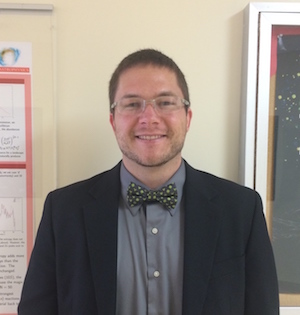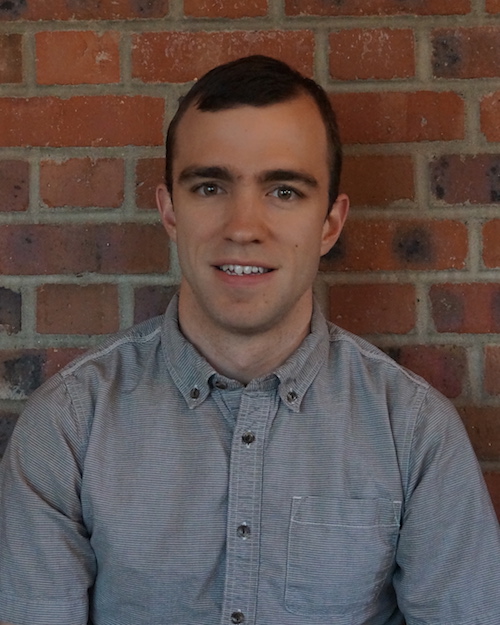Practical Sessions
Practical sessions will be held each afternoon following the school lectures in the morning, and will each correspond to the fission topic of the day. We will be using Jupyter notebooks as a common support throughout the school.
Session 1: Fission Cross Sections
Analysis of experimental data from a fission cross section measurement. We will use data collected in an experiment at LANSCE to go over some of the steps needed to determine fission cross sections. The analysis will include neutron time-of-flight calibration, and corrections for background events.
Instructor: Fredrik Tovesson, Kyle Schmitt (LANL)
Fredrik Tovesson is a scientist and deputy group leader in the LANSCE Weapons Physics group at Los Alamos National Laboratory. Fredrik received a PhD in nuclear physics from Orebro University in 2003, and joined LANL as a postdoctoral researcher in 2004. His research focuses on nuclear fission, and he works on several projects related to fission cross sections and yields. He is currently involved with high precision fission cross section measurements with the NIFFTE Time Projection Chamber (TPC) and fission yield measurements with the SPIDER fragment spectrometer.
Kyle Schmitt received is PhD in Nuclear Physics from the University of Tennessee in 2011. He joined the Laboratory as a postdoctoral associate in 2016 after serving as a Detector Physicist at ORTEC and as a postdoctoral associate at Oak Ridge National Laboratory and the University of Tennessee.
Session 2: Fission Fragment Yields
Measuring Cumulative Fission Product Yields by Activation with Quasi-Monoenergetic Neutrons and Whole Target Gamma-Ray Counting. We will look at recent experimental fission product yield data and use it to determine several cumulative fission product yields. We will be analyzing gamma-ray spectra, making a normalization for the flux and considering several pitfalls that can occur in the analysis.
Instructor: Matthew Gooden, Gencho Rusev (LANL)
Matthew Gooden received his doctorate in Nuclear Physics from North Carolina State University in 2014 and is currently a postdoctoral research associate at LANL. His doctoral work at TUNL involved measuring cumulative fission product yields using monoenergetic neutrons. He continues to make energy dependence measurements of fission product yields, as well as, using nuclear techniques to the diagnosis of inertial confinement fusion implosions at the National Ignition Facility at Lawrence Livermore National Laboratory.
Gencho Rusev is a staff scientist in the Nuclear and Radiochemistry group at Los Alamos National Laboratory. After completing his PhD at Technical University Dresden, Germany, he joined Triangle Universities Nuclear Laboratory as a postdoctoral research associate in 2007. He then came to LANL as a postdoc in 2011. He worked in the area of nuclear structure and statistical gamma-ray properties using heavy-ion, photon- and neutron-induced reactions. Gencho's current research focuses on neutron capture and neutron-induced fission studies with the detector array DANCE.
Session 3: Prompt Fission Neutrons and Gamma Rays
We will analyze output from the FREYA and CGMF fission event generators, and in particular study correlations in prompt fission neutron and gamma-ray emission results.
Instructor: Ramona Vogt (LLNL/LBNL/UC Davis), Jackson van Dyke (UC Berkeley)
Ramona Vogt got her PhD in nuclear theory at the State University of New York at Stony Brook. She joined LLNL in 2007 where she is a member of the nuclear data and theory group at LLNL. She is also an Adjunct Professor at UC Davis. She is an internationally recognized nuclear theorist with more than 100 published papers and 75 conference proceedings and has been an organizer of many international workshops and conferences. She is the co-developer of the complete Monte Carlo fission model FREYA (Fission Reaction Event Yield Algorithm) with Jorgen Randrup of LBNL. Together they have written numerous papers on FREYA, including several with experimental collaborators, and, along with Jerome Verbeke of LLNL, have published FREYA in Computer Physics Communications. She is actively involved in the American Physical Society, having been a member of the Executive Committee for the Topical Group on Hadronic Physics since 2008. She became a Fellow of the APS in 2010 and an APS Outstanding Referee in 2016. She has been an organizer of Nuclear Science Day for Girl and Boy Scouts at LBNL since 2011. When not doing physics, she is likely out running on trails.
Jackson van Dykeis a student at UC Berkeley studying physics. Recently he has worked with the FREYA fission event modeling algorithm. In particular he has been investigating the benefits and trade-offs of using stochastic optimization.
Session 4: Nuclear Safeguards Applications of Nuclear Data
Our exercise will show students the impacts of nuclear data on nuclear safeguards measurements. They will extract a "new" evaluation for fission properties and then see how that changes the assay of unknown material.
Instructors: Madison Andrews, Cameron Bates (LANL)
Madison Andrews received her Bachelor's in Engineering Physics from Queen's University in 2009. She completed her Master's and PhD in Nuclear Engineering at the Royal Military College of Canada in 2011 and 2015, respectively. She came to Los Alamos National Laboratory as a Director's Postdoctoral Fellow in 2015 and was recently converted to a staff scientist. Her current research is on safeguards radiation detection capabilities with the Monte Carlo Codes and Safeguards Science and Technology groups at LANL.
Cameron Bates is a staff scientist in XCP-3 at Los Alamos National Laboratory. Cameron received his BSE in Nuclear Engineering and Radiological Sciences from the University of Michigan in 2010. He went on to pursue a PhD in Nuclear Engineering at the University of California, Berkeley. He performed his PhD research at Lawrence Livermore National Laboratory working on ultra-high resolution gamma-ray spectroscopy for nuclear safeguards applications. Cameron received his PhD in May 2015 and took a postdoc position in XCP-3. He has since become a staff scientist in the group working on arms control and stockpile stewardship problems.








